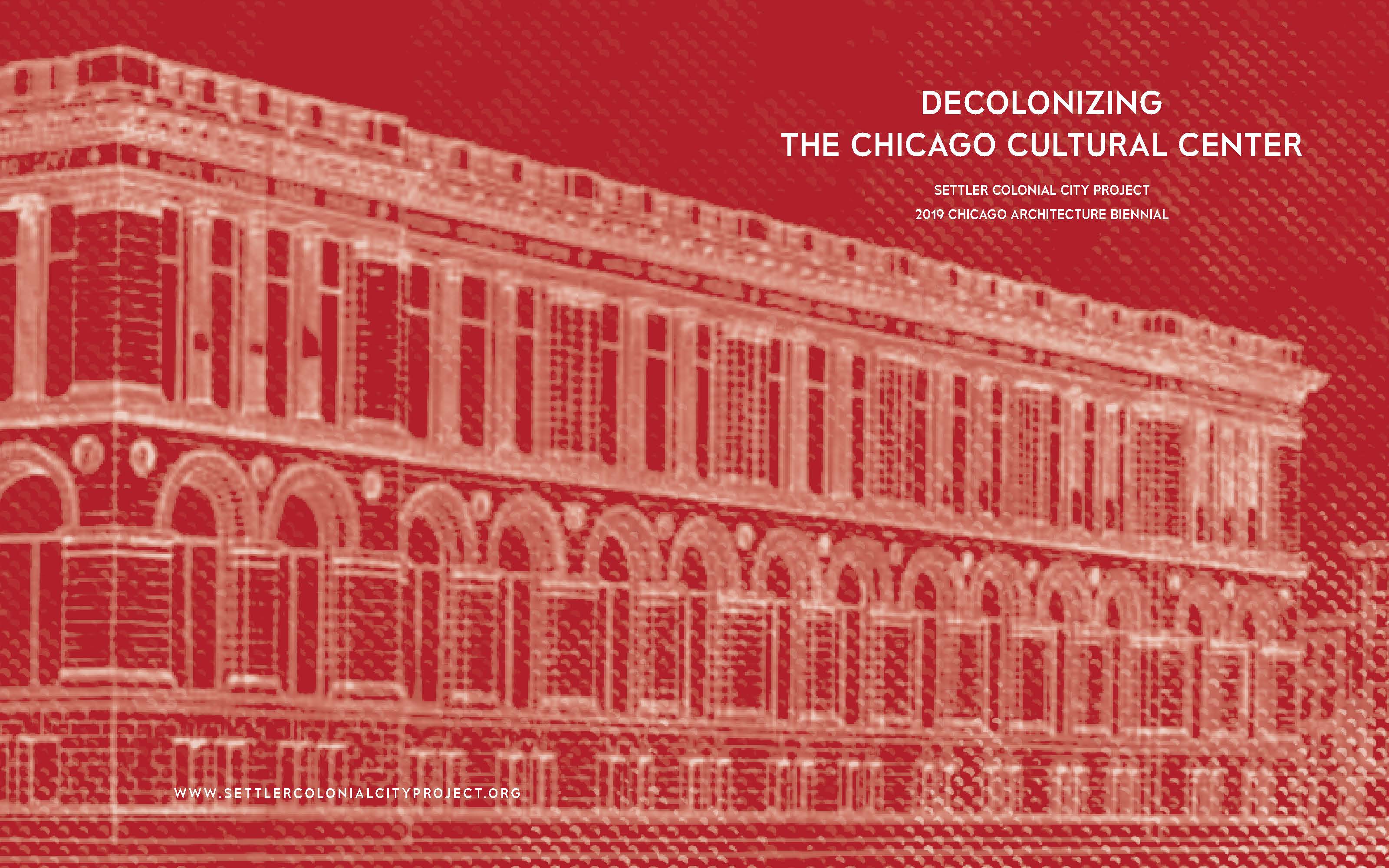2. Decolonizing the CCC

DECOLONIZING THE CHICAGO CULTURAL CENTER
SCCP 2019
The Chicago Cultural Center has been justly celebrated as a “people’s palace”: “it was made for everyone and welcomes everyone,” wrote renowned Chicago journalist M. W. Newman.[1] This claim, echoed many times by many others, testifies to the Center’s enduring status as a public monument accessible to all. Given this status, the decision to locate the Chicago Architecture Biennial in the Chicago Cultural Center is entirely logical.
This building for the people of Chicago, however, was only made possible by the extraction of land, labor, and resources from other people, near and far, in colonialist contexts. If the Chicago Cultural Center is a palace for Chicago’s people, then it is also an archive of the exploitation of colonized people whose land, labor, and resources yielded this palace’s constituent parts. According to The People’s Palace: The Story of the Chicago Cultural Center, the building is “a celebration of the arts, education, Chicago, and the world.”[2] Attention to the building as an archive of colonialism suggests that it is also an inadvertent yet vivid memorial to colonial extraction, dispossession, and violence.
To focus attention on colonialism as the key condition of possibility for the creation of the Chicago Cultural Center is not at all to diminish the building’s beauty and grandeur or call into question its importance in Chicago’s urban history. Rather, it is to compliment and complicate this history by revealing the ways in which even this renowned achievement of U.S. culture is related to colonial exploitation and violence that this culture has ignored, forgotten or disavowed. In this context, the history of the Chicago Cultural Center offers a unique perspective on the enmeshment of late 19th-century U.S. culture in U.S. settler colonialism and Indigenous dispossession.
And yet, to inaugurate an effort to decolonize the Chicago Cultural Center is not only to attend to the building’s past and its relationship to colonialism, both in the United States and across the globe; this effort also can open up consideration of futures in which colonial pasts are remembered, addressed, and redressed. Decolonization is not a metaphor: this profound claim, made by Eve Tuck and K. Wayne Yang, also leads us towards an imagination of the Chicago Cultural Center as hosting new publics in new spaces in a new future, each defined by an awareness of Chicago’s colonial antecedents.[3]
Read and download this publication.
[1] M. W. Newman, “Introduction,” in Nancy Seeger, The People’s Palace: The Story of the Chicago Cultural Center(Chicago: Chicago Cultural Center, 1999), unpaged.
[2] Seeger, The People’s Palace: The Story of the Chicago Cultural Center, unpaged.
[3] Eve Tuck (Aleut) and K. Wayne Yang, “Decolonization is Not a Metaphor” Decolonization Indigeneity Education Society1(1), 2012: 1-40.